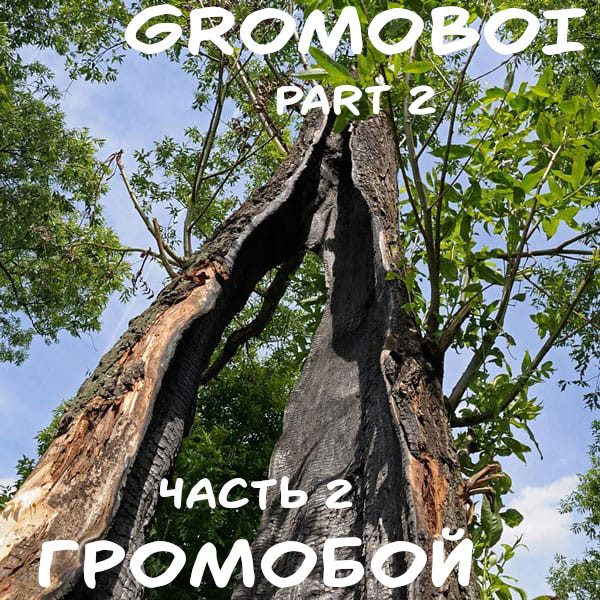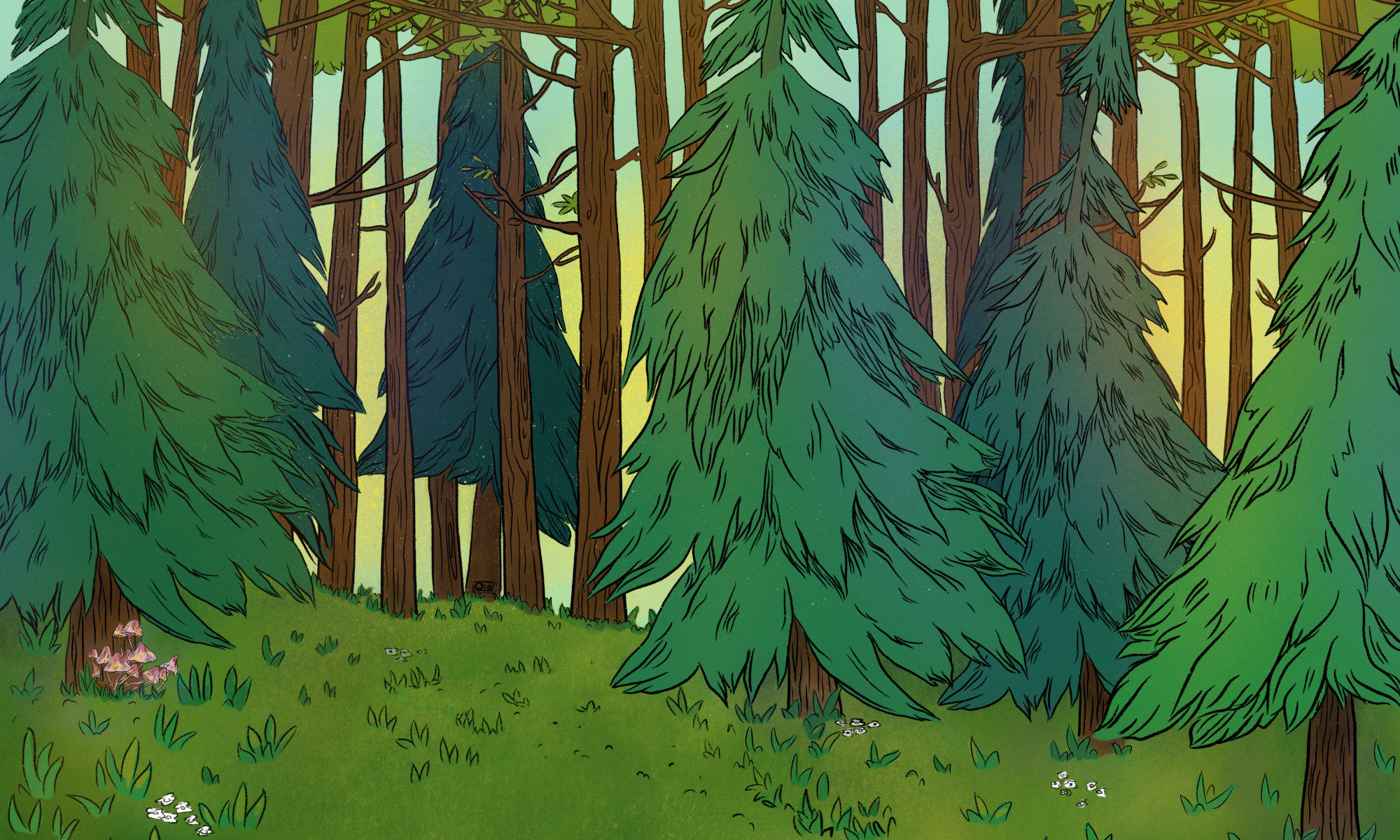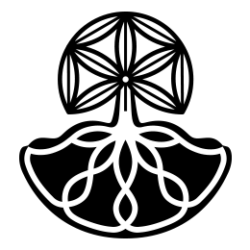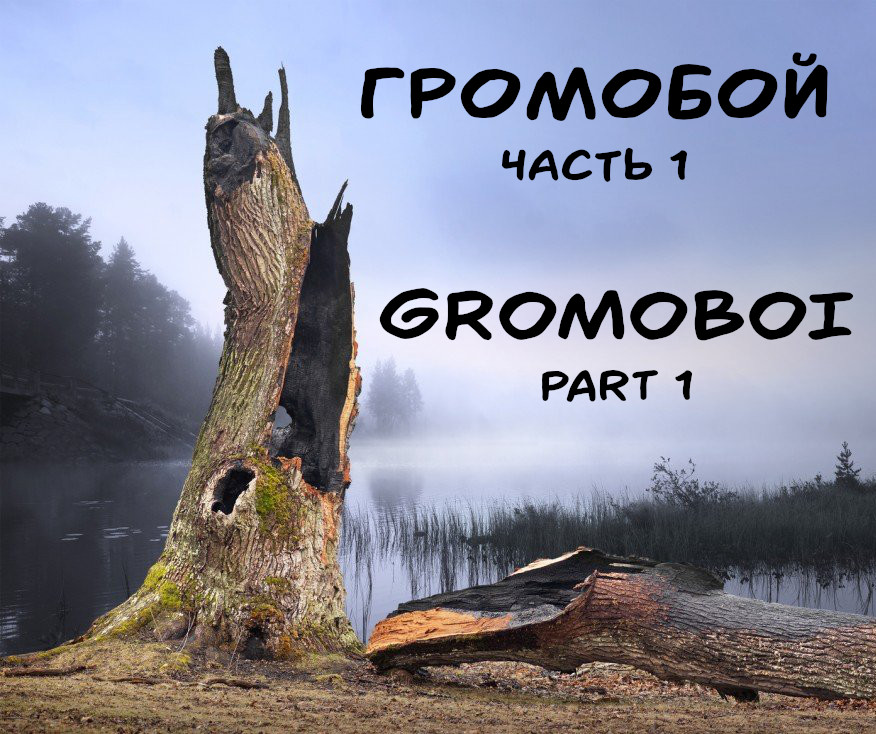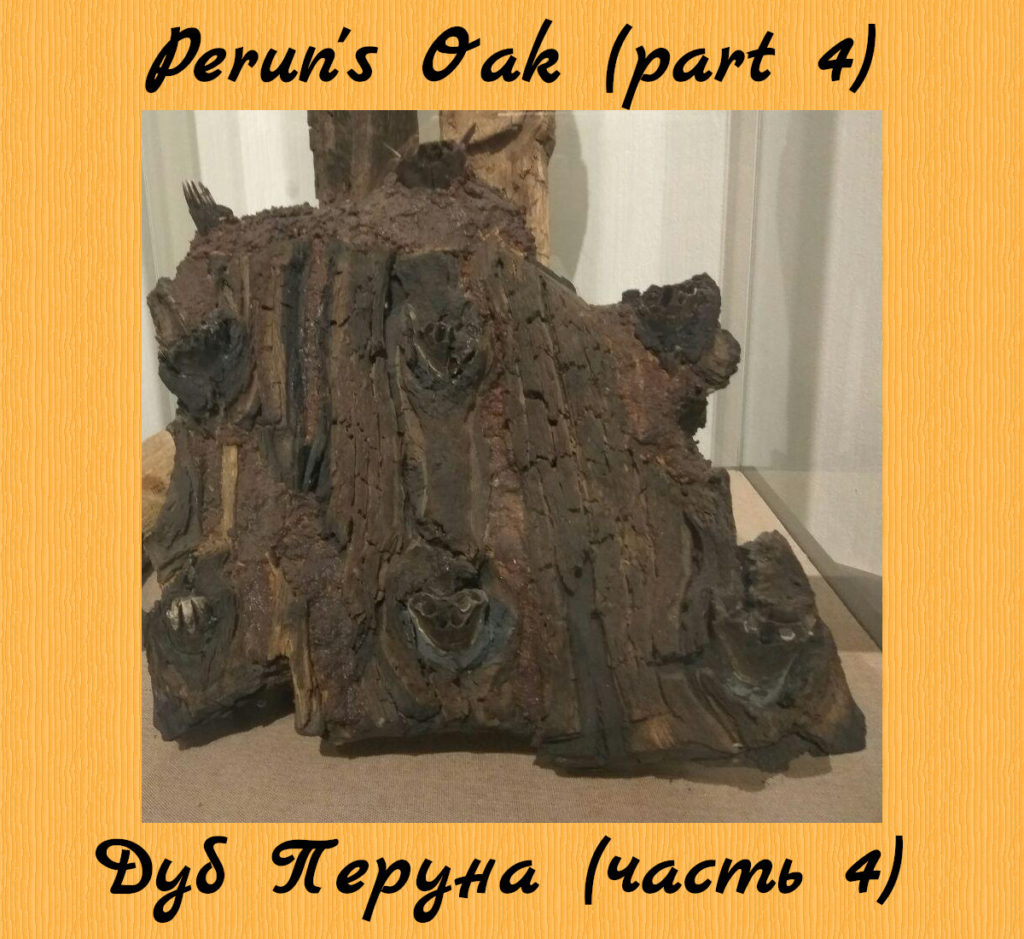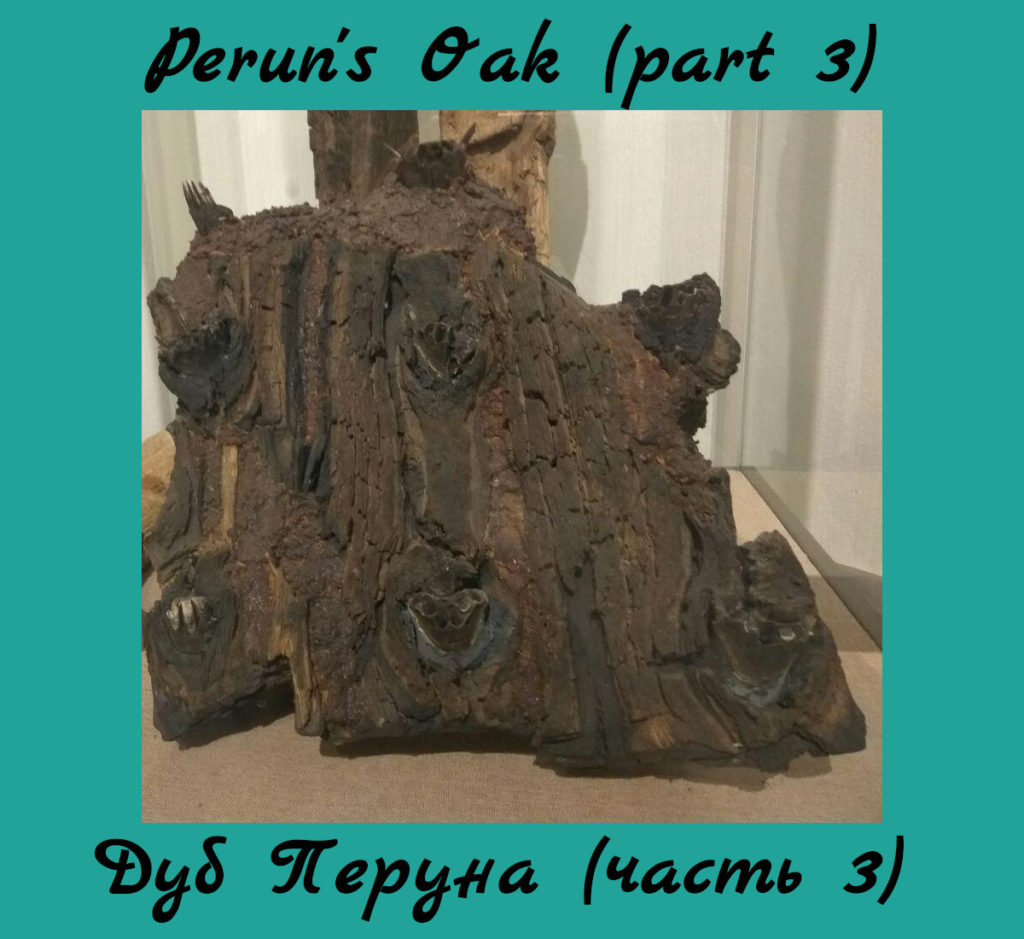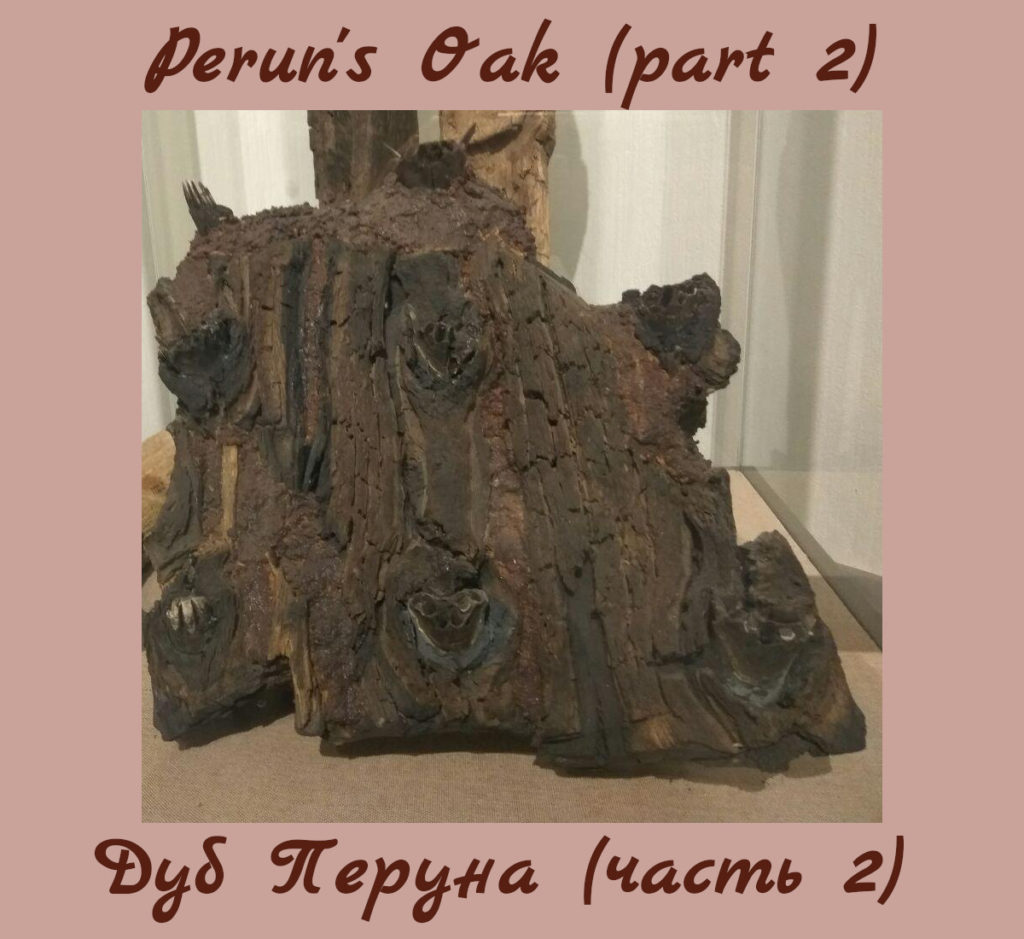Gromoboi was also used as protection from thunder and lightning in the Zhitomir region, where a house was fumigated with its wooden chips. In Slovenia our Slavic ancestors during a thunderstorm used to put Gromoboi splinters inside a fireplace or on a top of burning coals to ward off trouble.
ꏍ
Across the territory of modern Ukraine and Belarus, Gromoboi was widely used for healing purposes. People chewed its chips to keep their teeth strong “like thunder” and rinsed their mouth with a decoction of water boiled Gromoboi bark. They also scraped the burned part of the Gromoboi and prepared “black drink” against the “black disease” – epilepsy, as well as boiled the Gromoboi chips to be used against back pains. In the Zhitomir region, people believed that inside the Gromoboi trunk (which they called “Thunder Tree”) there is always a “fiery candle” that heals any disease.
ꏍ
In Belarus people used Gromoboi to make a special wooden tub for sourdough bread preparation (it was called “dezha”) – so that “the witch would not steal the top part of the dough”. In Poland, it was believed that bread would grow quickly in such a wooden tub, if the tub was made by cooper in one day and from a pine tree broken by lightning.
ꏍ
Source: “Slavic Antiquities” – encyclopedic dictionary in 5 volumes by Institute for Slavic Studies of the Russian Academy of Sciences.
